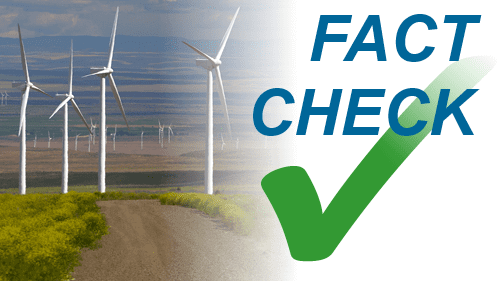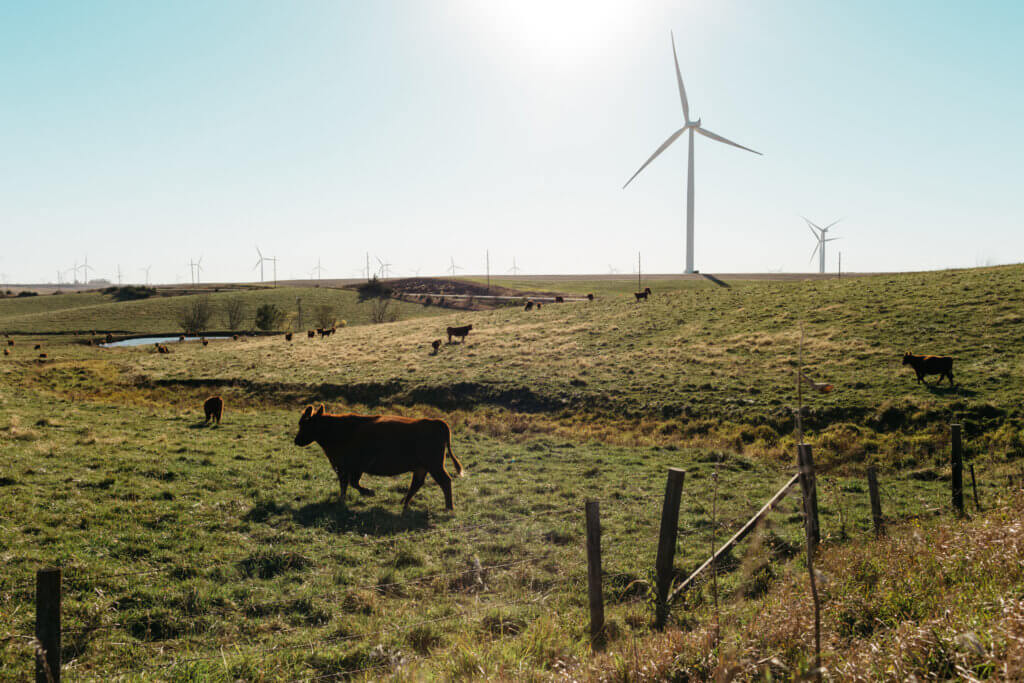What AP left out of its latest story on eagles and wind power
As with previous coverage by Associated Press’s Dina Cappiello on eagles and wind energy, critical context about wind power and wildlife went missing from her report today. It is concerning that Ms. Cappiello again minimizes wind power’s perspective despite an abundance of important information made available to her.
No one takes wildlife impacts more seriously than the wind industry, and while unfortunately some eagles occasionally collide with turbines at some wind farms, this is not a common occurrence: fatalities of golden eagles at modern wind facilities represent only 2 percent of all documented sources of human caused eagle fatalities, while only a few bald eagles have died in collisions in the history of the industry. Yet the industry is committed to, and strives for, further reducing these impacts.

This figure is far lower than eagle fatalities due to other leading causes, including lead poisoning, poisoning in general, electrocutions, collisions with vehicles, drowning in stock tanks, and illegal shootings. Further, the only reason we know as much as we do is because unlike these other sources, the wind industry is conducting pre- and post-construction surveys and self-reporting the losses.
Further, a recent study published in the Journal of Wildlife Management shows stable golden eagle populations throughout North America. The lead author is Brian Millsap, National Raptor Coordinator with FWS. This study examined population data throughout the range of golden eagles over the past four decades (i.e., 1968-2010) and found that the population has, in general, remained stable, and in fact slightly increased overall. The study concludes, “Our results clarify that golden eagles are not declining widely in the western United States."
This is an important data point, which contradicts claims that golden eagle populations have been declining throughout their range, with some in the anti-wind community attributing that trend to the expansion of wind energy. Despite the fact that this information was delivered to the AP on deadline before the story was published, it makes no mention of the fact that there is no decline in golden eagles in the American West.
Even so, the wind industry is and will remain actively engaged with both the regulatory and conservation communities to find ways of further avoiding, minimizing and fully mitigating for any impacts to both eagle species.
An infographic with the story also uses a contentious figure of bird strikes at wind farms, despite our sending her a comprehensive analysis showing in detail why that figure reflects the opinion of one biologist and is an outlier when compared to other mortality estimates conducted by numerous biologists and statisticians over the past several decades.
When we realized several of these facts went missing in Ms. Cappiello’s story, we submitted them in an online comment on the AP site. While the comment was ultimately approved and posted, that process took more than a day.
Ultimately, the story exaggerates the point of view of less credible opponents of wind power. It omits mainstream bird conservation groups such as National Audubon Society and National Wildlife Federation, which support developing more wind power because it helps avoid the vastly greater wildlife impacts of other forms of energy. And it leaves out information on the progress made by the industry-conservation partnership, American Wind Wildlife Institute, which we’ve provided Ms. Cappiello previously.
We again urge AP to treat this topic more fairly and not with unbalanced advocacy journalism that relies on misleading and incomplete information, and lacks context for its readers’ understanding of a complex issue.
Photo credit: David K. Clarke
Related articles:
AWWI releases new issue brief on eagle protection and wind power, July 26, 2013
American wind power: Leading the way to a cleaner future, July 22, 2013
Wind power does not strongly affect greater prairie chickens, seven-year study finds, July 12, 2013
American Wind Wildlife Institute database project moves ahead, July 10, 2013
In face of changing climate, major wildlife group calls for renewable energy, June 20, 2013
Fact check: 5 things the AP missed in its recent coverage of wind energy, May 14, 2013
Fact check: More misinformation from Bryce on wind and birds, March 25, 2013
Fact check: Spectator (U.K.) overlooks facts on wind power and wildlife, January 15, 2013
Fact check: FOX News article fails to put wind development in context, January 2, 2013
Fact check: CFACT's Driessen wildly off base on bird claims, December 24, 2012
118 sportsmen's and conservation groups urge Congress to extend wind tax credits, December 6, 2012
Wind-wildlife meeting highlights wind industry's proactive approach, December 3, 2012
Fact check: Voice of America article on wind and birds lacks context, November 2, 2012
Sage-grouse collaborative to fund two wind-related studies, August 13, 2012
Fact check: Wired story bypasses wind industry's efforts on bats, July 10, 2012
Opinion: Wind energy threat to eagles relatively low, June 26, 2012
Fact check: Bond bashes wind, mangles facts [UPDATED], June 19, 2012
American Wind Wildlife Institute releases white paper on eagles and wind power, May 25, 2012
Already following federal bird guidelines, wind co. says, March 29, 2012
Fact check: Bryce missteps on wind and birds, March 8, 2012
Colorado collaboration: Wind companies, conservation groups agree on wildlife best practices, February 6, 2012
The Fish & Wildlife Eagle Permit Rule: Our perspective, January 10, 2012
Wind power's impact on birds: modest, December 15, 2011
Bird fatalities at Laurel Mountain substation, November 9, 2011
Birds and wind: Bad news leads, good news in weeds, August 29, 2011
Fact check: Fox News off base on bird collisions, August 19, 2011
News story draws questionable conclusions from eagle collisions with old turbines, June 6, 2011
WINDPOWER report: Whooping cranes may avoid wind farms, more research ahead, May 25, 2011
Wind developer launches intensive avian monitoring program, May 23, 2011
AWEA files comments on "unworkable" U.S. Fish & Wildlife Service guidelines, May 19, 2011
U.S. Fish & Wildlife Service, AWEA, wind developers sign agreement to promote endangered species conservation, April 20, 2011
Wind industry backs research on bat concerns including White-Nose Syndrome, April 1, 2011
Wind turbine bird threat modest, January 18, 2011
Editorial: How serious is threat to birds?, January 5, 2011
Wind energy and birds: No double standard, September 9, 2009
Wind-wildlife group names first president, February 24, 2009



